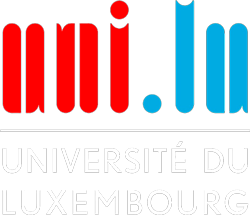Small but global cities
Small but global cities
GLOBAL investigates the process of global urbanisation that brings about “relational cities”. These are metropolises that are smaller than global cities but nonetheless, serve as important centres for the global flow of money, goods, services, people and knowledge. This study sheds light on how such cities are integrated into the aforementioned global markets or networks of flows, and how local niche sovereignty strategies and political economies help relatively minor metropolises to emerge as key centres in global finance. In this way the study bridges a number of knowledge gaps about the global configuration and trajectories of certain relational cities: how they emerged, how they gained their position in the connected global network, and where they are headed in the future.
Our specific empirical focus here is on three different cities, or city-state configurations: Luxembourg, Geneva and Singapore. Besides their topical fit in terms of the general issues being considered here, all three locales share certain core properties that make for interesting comparisons.
- They all experienced strong and rapid growth within a short period of time that is more related to network embeddedness – i.e. being situated in between, rather than networking centrality.
- Their growth rates were particularly driven by financial and other services and by integration in the global economy and global migration.
- All three cities also share particular governance patterns, successfully established by a powerful state.
Institutional interpretive approach combined with comparative policy analysis
The research objectives were met through a two-pronged approach:
i) an institutional, interpretive approach to understanding the way key policy and industry stakeholders construct policy objectives, and to uncovering the factors that drive policy development, and
ii) comparative policy analysis in order to create a dialogue between urban spaces that, at first glance, may seem incommensurate. This included an extensive literature review of government and corporate reports, government statistics, news media articles and scholarly publications. These materials were collected throughout the three years of the study and used as preparatory information for semi-structured interviews with policy and industry leaders in Geneva, Luxembourg and Singapore. They were also used as background contextual information, sources to fill empirical gaps, and to triangulate information gathered from our semi-structured stakeholder interviews.
Paradoxes of relationality
Prof. Markus Hesse and Dr. Catherine Mei Ling Wong collected original primary data between 2016 and 2019. Using their data analysis, they developed a framework for exploring relationality based on the identification of key drivers of relationality and their core characteristics. They also identified the paradoxes of their case cities as globally-oriented but locally-constrained places. Negative externalities unique to small but highly global cities revealed challenges from which conventional global cities such as London, Tokyo and New York may be shielded. But they also revealed a unique agility among such cities to reposition themselves and redesign their infrastructure in order to stay ahead of the curve and global competition.
© Picture Catherine WONG
